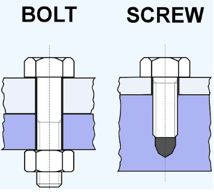If someone is using a torque wrench and there is to little thread and he hit the predrilled hole with the bolt. Will the guy using the torque wrench notice that? So that he can change bolt or add some thread?
I told our cheif engineer in a case that the thread will be too little if the schim would be zero and he claimed that the operator would notice.
I told our cheif engineer in a case that the thread will be too little if the schim would be zero and he claimed that the operator would notice.

